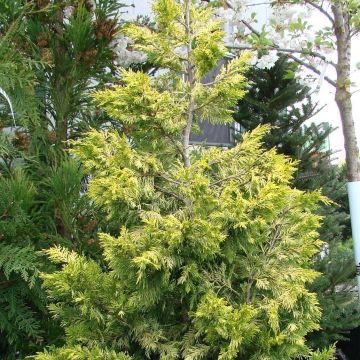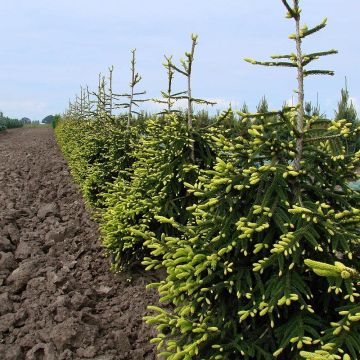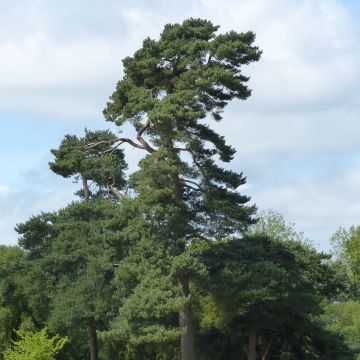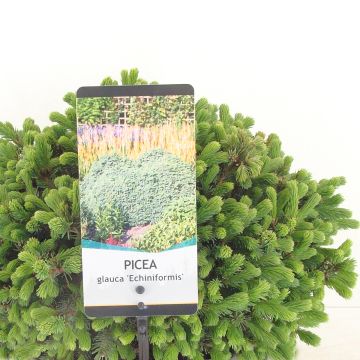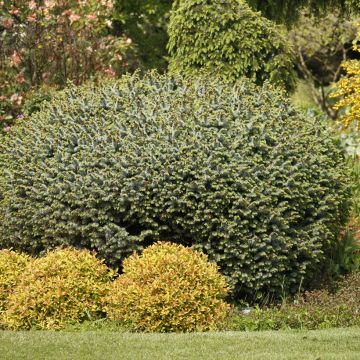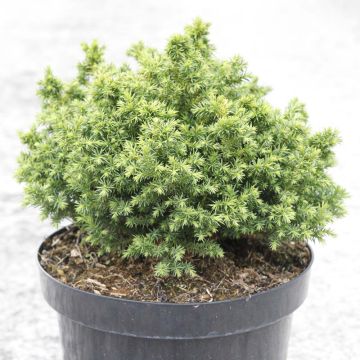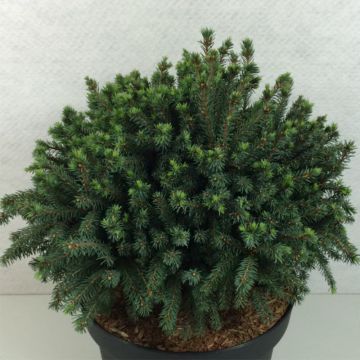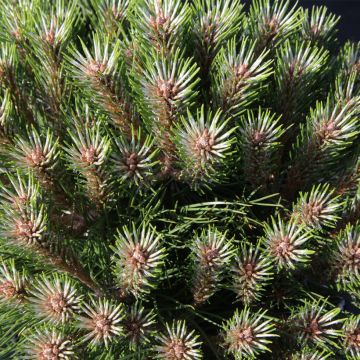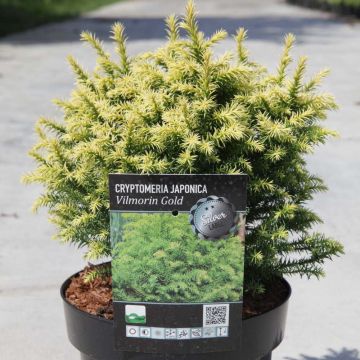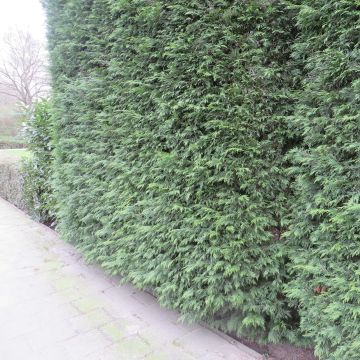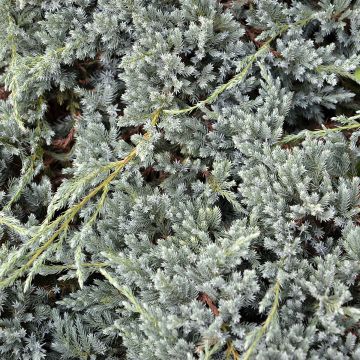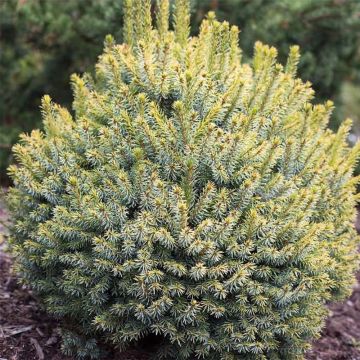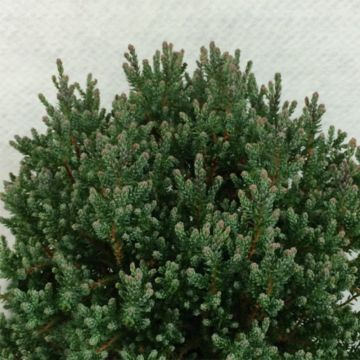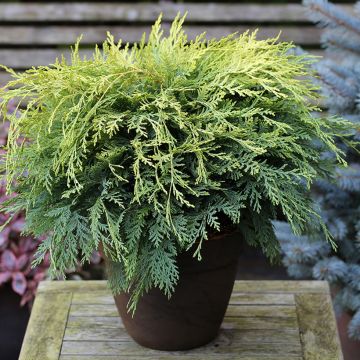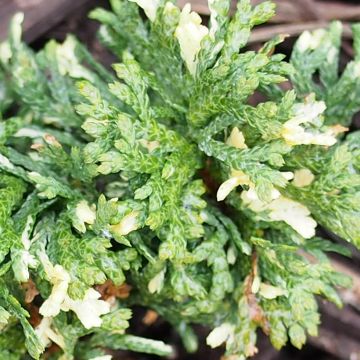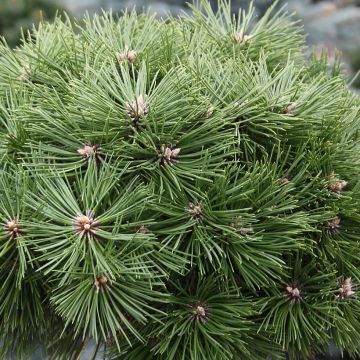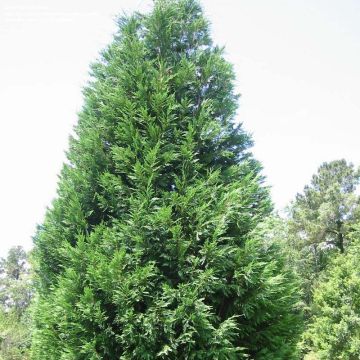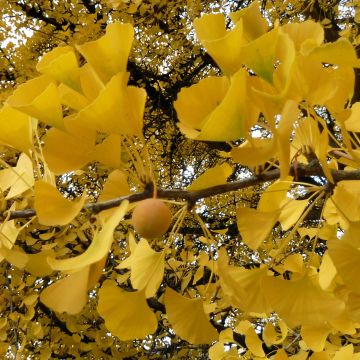

Thujopsis dolabrata Variegata - Hiba
Thujopsis dolabrata Variegata - Hiba
Thujopsis dolabrata Variegata
Hiba, Hiba Arborvitae, False Arborvitae
This item cannot be shipped to the selected country
Delivery charge from 5,90 €
More information
Shipping country:
-
Andorra
-
Austria
-
Belgium
-
Bulgaria
-
Chile
-
Croatia
-
Cyprus
-
Czechia
-
Denmark
-
Estonia
-
Finland
-
France
-
Germany
-
Greece
-
Hungary
-
Iceland
-
Ireland
-
Italy
-
Latvia
-
Lithuania
-
Luxembourg
-
Malta
-
Monaco
-
Netherlands
-
Poland
-
Portugal
-
Romania
-
Slovakia
-
Slovenia
-
Spain
-
Sweden
-
Switzerland
-
United Kingdom
Schedule delivery date,
and select date in basket
This plant carries a 24 months recovery warranty
More information
We guarantee the quality of our plants for a full growing cycle, and will replace at our expense any plant that fails to recover under normal climatic and planting conditions.
From 5,90 € for pickup delivery and 6,90 € for home delivery
Express home delivery from 8,90 €.
Would this plant suit my garden?
Set up your Plantfit profile →
Description
The Thujopsis dolobrata 'Variegata' is an old variety that is little known and rare to find. It distinguishes itself from other Japanese cedars with its flattened branches, sometimes medium green, sometimes creamy white, sometimes medium green speckled with creamy white. It is a conifer that forms a small pyramidal tree that works wonders when planted alone or in groups of three in a large rock garden or on a slope, bringing light to the darker corners of the garden. It is a hardy variety like the others, but its growth is reduced and its foliage is more prone to burning under more extreme climatic conditions. Plant it in a sheltered location from cold winds and burning sun in warmer climate regions, in cool, well-drained, neutral to acidic soil.
The Thujopsis dolobrata is the only representative of this genus related to cedars and belonging to the cypress family. It is a large evergreen conifer native to high-altitude humid forests in central and southern Japan. In the wild, this tree reaches up to 40 metres (131 feet) in height and 10 metres (33 feet) in width, and is covered with a reddish-brown bark that peels off in vertical strips. It has a pyramidal and dense habit, with branches that can form multiple tops and flattened branches that hang down to the ground, resembling the elegant fronds of ferns. It is a very hardy species, well adapted to cool, temperate climates and moist, non-calcareous soils. Its wood is durable and pleasantly fragrant, similar to that of Thuja plicata. In Thujopsis, the cones are ovoid, small (15 mm (1in) long and 10 mm (1in) in diameter), covered with 6 to 12 scales themselves covered with a violet-white wax when young. The Japanese cedar, which loves humid environments, has its rightful place in a cool rock garden, a beautiful pot on the terrace, or near a water feature, in humus-rich soil.
The 'Variegata' variety has been cultivated for a long time and remains relatively unknown. Its growth is slower: it grows 15 to 20 cm (6 to 8in) per year and reaches a maximum size of 4 m (13ft) in height and 3 m (10ft) in width. This conifer reveals an aromatic foliage when crushed, composed of flattened branches that appear braided, and covered with fleshy scale-like leaves 3 mm in length. Overlapping each other, the diamond-shaped leaves give the branches a flat, but thicker, appearance compared to cedars. The glossy foliage is made up of hatchet-shaped scales, variegated bright green with creamy white on the upper side and silver on the lower side, distinguishing it from true cedars. In this cultivar, entire branches can be creamy white. This variegation is susceptible to burning if the tree is too exposed to sun or cold winds.
The Japanese cedar 'Variegata' is a plant for moist, non-calcareous soil. It naturally finds its place in a small garden, in a cool rock garden, or planted alongside a pond. It pairs well with large stones bordering a small waterfall, ferns, astilbes, primroses, Farfugium, and other plants that thrive in moist but sunny locations. It also complements other Japanese garden species such as Japanese azaleas, Japanese maples, and Hinoki false cypresses.
The true graphic qualities of conifers naturally emerge in the design of a contemporary garden, which favors the aesthetics of shapes, silhouettes, and textures over the dance of blooms. These plants, with their reassuring permanence, provide lasting structure to a bed, mark pathways, and border terraces, easily replacing the strong presence of trimmed boxwood or holly. The key is to play with volumes and colors.
Report an error about the product description
Thujopsis dolabrata Variegata - Hiba in pictures
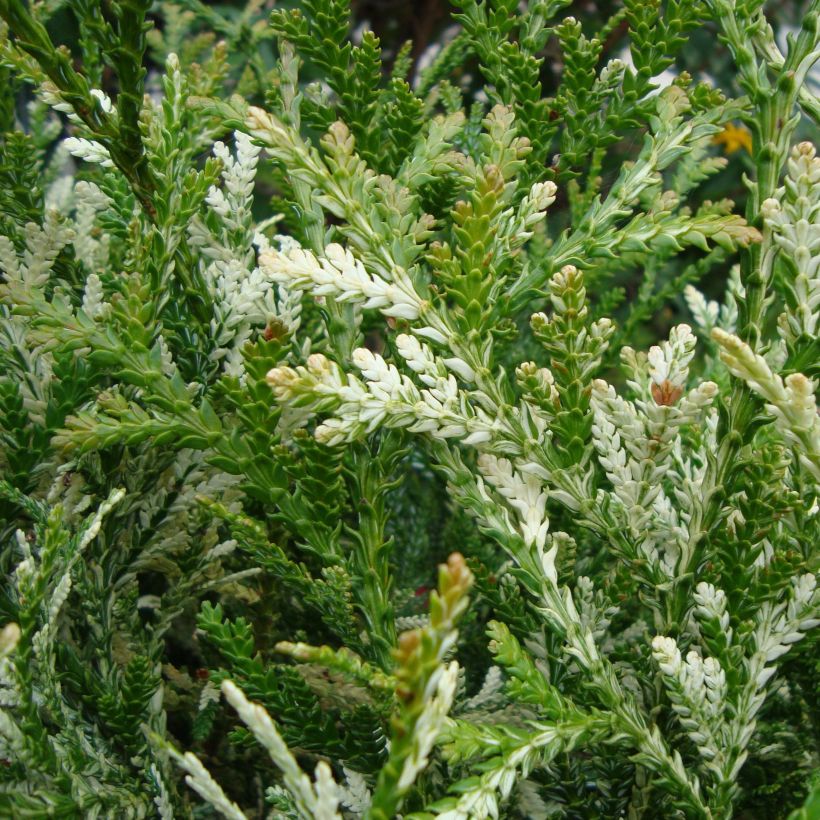

Plant habit
Foliage
Botanical data
Thujopsis
dolabrata
Variegata
Cupressaceae
Hiba, Hiba Arborvitae, False Arborvitae
Cultivar or hybrid
Other Conifers A to Z
Planting and care
The Thujopsis dolobrata 'Variegata' should be planted from September to November and from February to June in deep, humus-rich, slightly acidic or neutral soil that remains consistently moist throughout the year. It is sensitive to extreme heat and cannot tolerate any drought. However, it requires a sunny or partially shaded exposure to thrive. Soak the root balls thoroughly before planting. Optionally, add organic amendments during planting and water generously with low to non-calcareous water during the first few years, especially during periods of drought. In very poor soil, you can apply a special conifer fertiliser every April and cultivate the soil in summer. This hardy conifer (tolerating temperatures down to at least -25°C (1°F)) does not require pruning.
Planting period
Intended location
Care
This item has not been reviewed yet - be the first to leave a review about it.
Conifers
Haven't found what you were looking for?
Hardiness is the lowest winter temperature a plant can endure without suffering serious damage or even dying. However, hardiness is affected by location (a sheltered area, such as a patio), protection (winter cover) and soil type (hardiness is improved by well-drained soil).

Photo Sharing Terms & Conditions
In order to encourage gardeners to interact and share their experiences, Promesse de fleurs offers various media enabling content to be uploaded onto its Site - in particular via the ‘Photo sharing’ module.
The User agrees to refrain from:
- Posting any content that is illegal, prejudicial, insulting, racist, inciteful to hatred, revisionist, contrary to public decency, that infringes on privacy or on the privacy rights of third parties, in particular the publicity rights of persons and goods, intellectual property rights, or the right to privacy.
- Submitting content on behalf of a third party;
- Impersonate the identity of a third party and/or publish any personal information about a third party;
In general, the User undertakes to refrain from any unethical behaviour.
All Content (in particular text, comments, files, images, photos, videos, creative works, etc.), which may be subject to property or intellectual property rights, image or other private rights, shall remain the property of the User, subject to the limited rights granted by the terms of the licence granted by Promesse de fleurs as stated below. Users are at liberty to publish or not to publish such Content on the Site, notably via the ‘Photo Sharing’ facility, and accept that this Content shall be made public and freely accessible, notably on the Internet.
Users further acknowledge, undertake to have ,and guarantee that they hold all necessary rights and permissions to publish such material on the Site, in particular with regard to the legislation in force pertaining to any privacy, property, intellectual property, image, or contractual rights, or rights of any other nature. By publishing such Content on the Site, Users acknowledge accepting full liability as publishers of the Content within the meaning of the law, and grant Promesse de fleurs, free of charge, an inclusive, worldwide licence for the said Content for the entire duration of its publication, including all reproduction, representation, up/downloading, displaying, performing, transmission, and storage rights.
Users also grant permission for their name to be linked to the Content and accept that this link may not always be made available.
By engaging in posting material, Users consent to their Content becoming automatically accessible on the Internet, in particular on other sites and/or blogs and/or web pages of the Promesse de fleurs site, including in particular social pages and the Promesse de fleurs catalogue.
Users may secure the removal of entrusted content free of charge by issuing a simple request via our contact form.
The flowering period indicated on our website applies to countries and regions located in USDA zone 8 (France, the United Kingdom, Ireland, the Netherlands, etc.)
It will vary according to where you live:
- In zones 9 to 10 (Italy, Spain, Greece, etc.), flowering will occur about 2 to 4 weeks earlier.
- In zones 6 to 7 (Germany, Poland, Slovenia, and lower mountainous regions), flowering will be delayed by 2 to 3 weeks.
- In zone 5 (Central Europe, Scandinavia), blooming will be delayed by 3 to 5 weeks.
In temperate climates, pruning of spring-flowering shrubs (forsythia, spireas, etc.) should be done just after flowering.
Pruning of summer-flowering shrubs (Indian Lilac, Perovskia, etc.) can be done in winter or spring.
In cold regions as well as with frost-sensitive plants, avoid pruning too early when severe frosts may still occur.
The planting period indicated on our website applies to countries and regions located in USDA zone 8 (France, United Kingdom, Ireland, Netherlands).
It will vary according to where you live:
- In Mediterranean zones (Marseille, Madrid, Milan, etc.), autumn and winter are the best planting periods.
- In continental zones (Strasbourg, Munich, Vienna, etc.), delay planting by 2 to 3 weeks in spring and bring it forward by 2 to 4 weeks in autumn.
- In mountainous regions (the Alps, Pyrenees, Carpathians, etc.), it is best to plant in late spring (May-June) or late summer (August-September).
The harvesting period indicated on our website applies to countries and regions in USDA zone 8 (France, England, Ireland, the Netherlands).
In colder areas (Scandinavia, Poland, Austria...) fruit and vegetable harvests are likely to be delayed by 3-4 weeks.
In warmer areas (Italy, Spain, Greece, etc.), harvesting will probably take place earlier, depending on weather conditions.
The sowing periods indicated on our website apply to countries and regions within USDA Zone 8 (France, UK, Ireland, Netherlands).
In colder areas (Scandinavia, Poland, Austria...), delay any outdoor sowing by 3-4 weeks, or sow under glass.
In warmer climes (Italy, Spain, Greece, etc.), bring outdoor sowing forward by a few weeks.
